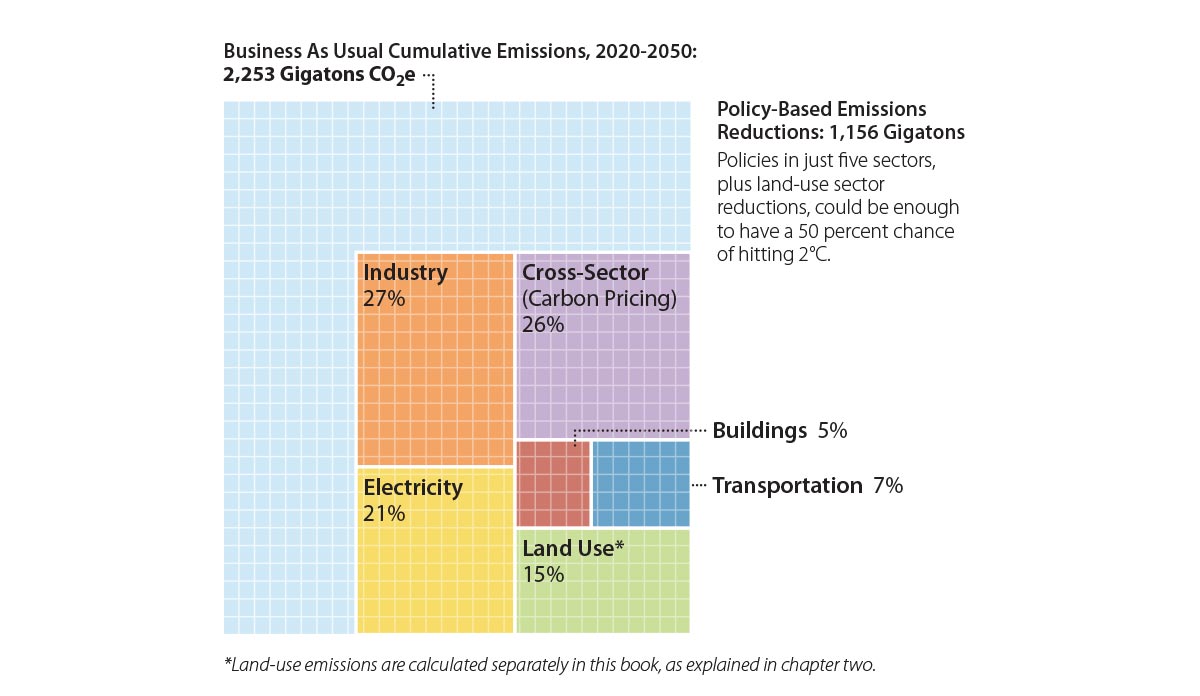Our globe is on a fast-track to exceed 2˚C in warming by 2050, leading to more extreme weather events. So what, specifically, would it take for us not to surpass a 2˚C increase in global temperature in the next 30 years? An energy policy firm, Energy Innovation, chose to tackle that question head-on, by modeling how current energy policies will impact future emissions.
To have a 50% chance of not overshooting 2˚C by 2050, we must reduce our carbon emissions by 1156 gigatons, or 41%, from we might expect to produce over the next 30 years. This is achievable if the top 20 greenhouse gas emitting countries (with China and the US in the lead) reduce their emissions collectively. The figure above illustrates the cumulative emissions that need to (and can) be reduced across five sectors of the economy, and land use, in order to remain below the most dangerous levels in 2050.
Industry has the greatest potential for cutting back on global emissions through policies focused on more efficient energy production and stricter emissions standards (such as regulating oil and gas leaks). Power sector (electricity) emissions would decline with renewable energy incentives and improving the grid’s capability to accommodate multiple energy sources. Transportation sector emissions would drop with stricter fuel economy standards and more green urban transportation systems (improved public transportation, bike lanes, and sidewalks). A buildings’ energy consumption could decrease with more efficient building codes and appliance standards (such as improved insulation and energy-saving electronics). Carbon Pricing is a cross-sectional policy that would create carbon taxes and caps, while land use emissions could be reduced through policies aimed at reducing deforestation and forest degradation.
The Paris Agreement provides targets for reducing emissions, but it’s policy implementation that will allow for those targets to be met. This is the first time we have access to clear guidelines for what we need to do in order to curb our emissions for a safer future. How to make the necessary changes is less clear, but will certainly be impossible without focused and concerted international effort.
Databyte via How to Prioritize Policies for Emissions Reduction. Energy Innovation.













